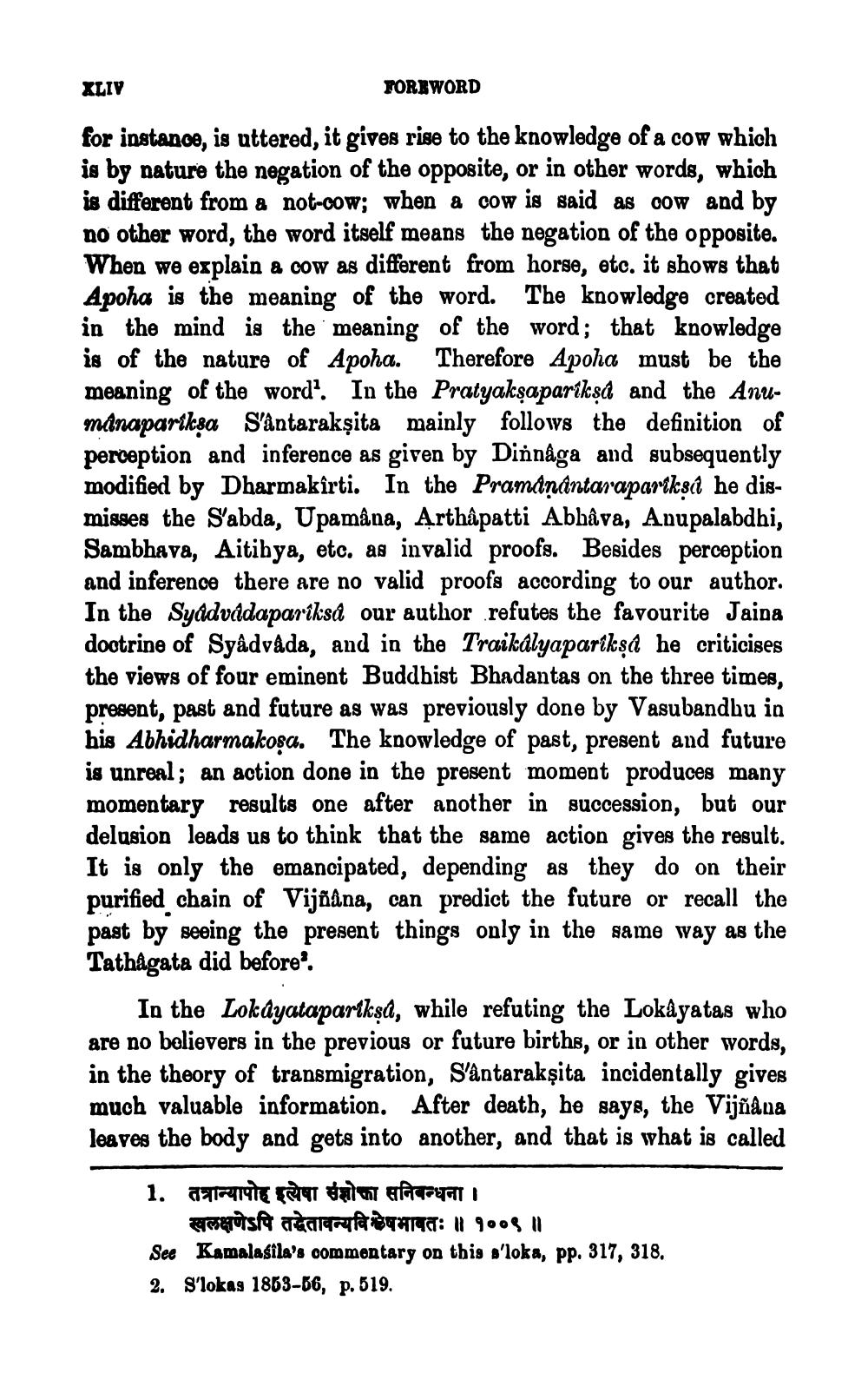________________
XLIV
FOREWORD
for instance, is uttered, it gives rise to the knowledge of a cow which is by nature the negation of the opposite, or in other words, which is different from a not-cow; when a cow is said as cow and by no other word, the word itself means the negation of the opposite. When we explain a cow as different from horse, etc. it shows that Apoha is the meaning of the word. The knowledge created in the mind is the meaning of the word; that knowledge is of the nature of Apoha. Therefore Apoha must be the meaning of the word?. In the Pratyaksapariksd and the Anumánapariksa S'ântarakṣita mainly follows the definition of perception and inference as given by Dinnaga and subsequently modified by Dharmakirti. In the Pramănântarapariksi he dismisses the S'abda, Upamâna, Arthâpatti Abhava, Anupalabdhi, Sambhava, Aitibya, etc. as invalid proofs. Besides perception and inference there are no valid proofs according to our author. In the Syâdvádaparikså our author refutes the favourite Jaina dootrine of Syadváda, and in the Traikalyapariksa he criticises the views of four eminent Buddhist Bhadantas on the three times, present, past and future as was previously done by Vasubandhu in his Abhidharmakosa. The knowledge of past, present and future is unreal; an action done in the present moment produces many momentary results one after another in succession, but our delusion leads us to think that the same action gives the result. It is only the emancipated, depending as they do on their purified chain of Vijñana, can predict the future or recall the past by seeing the present things only in the same way as the Tathagata did before'.
In the Lokayatapariksd, while refuting the Lokayatas who are no believers in the previous or future births, or in other words, in the theory of transmigration, S'ântarakṣita incidentally gives much valuable information. After death, he says, the Vijñana leaves the body and gets into another, and that is what is called
1. 09112TE FRA ale afara
खलक्षणेऽपि तद्धेतावन्यविश्वेषभावतः ॥ १००९॥ See Kamalasila's commentary on this s'loka, pp. 317, 318. 2. Slokas 1853-B6, p. 519.




